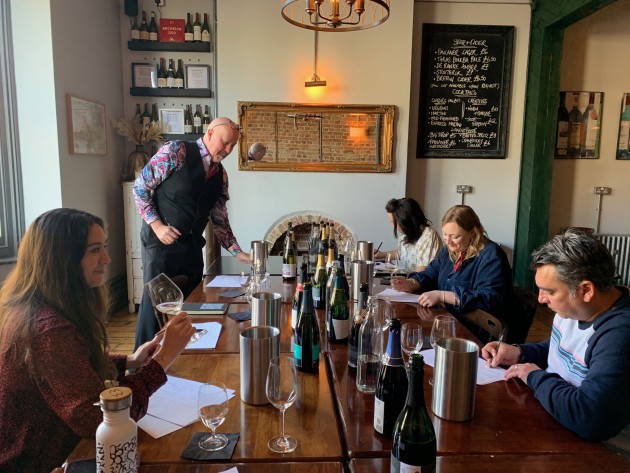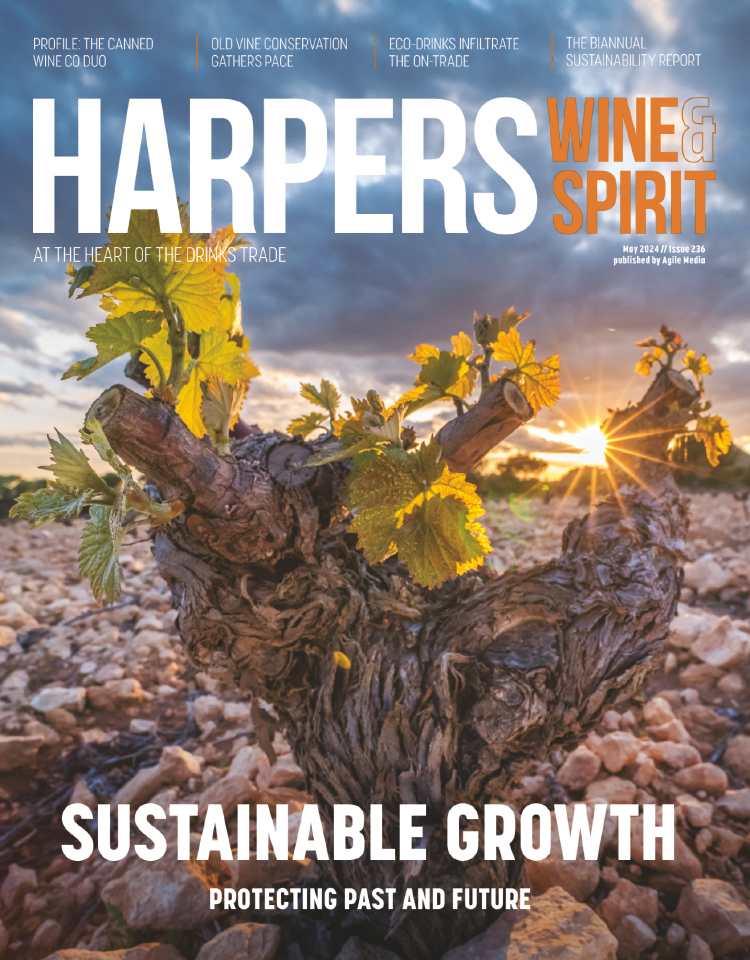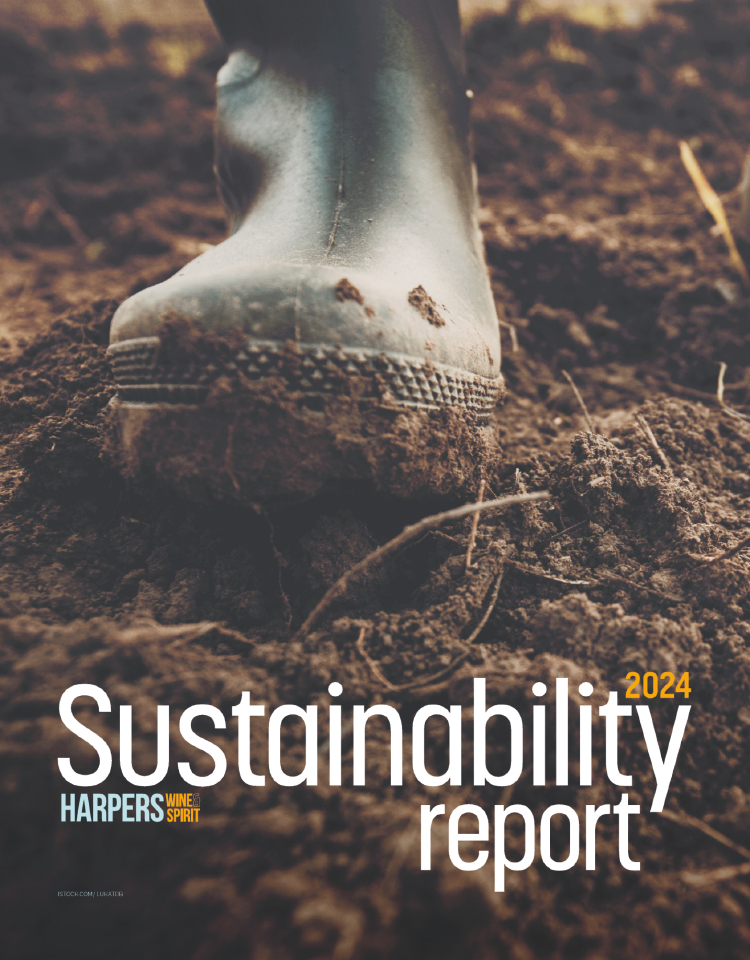
Taste off: Tasmania vs England
In the first of our new series, Andrew Catchpole invited a panel to put Tasmanian and English sparkling wines through their paces.
Tasters:
Lily Ashdown Harris, sommelier, Wild Flor
Henry Butler, co-owner, Butlers Wine Cellar
Sophia Longhi, wine writer and critic, Skin+Pulp
Simon Roberts, head winemaker, Ridgeview Wine Estate
Lizzy Parrott, fine wine marketing ambassador, Accolade Wines
Andrew Catchpole, editor, Harpers Wine & Spirit
The brief:
Designed as a comparison of these cooler-climate, quality-focused sparkling territories, emphasis was placed on stylistic considerations – the similarities and differences of these regions and their wines – plus how they sit against the wider sparkling wine market in terms of commercial opportunities and suitable placement on lists and shelves. In short, a ‘buyers’ eye’ view.
Cool, green and with still youthful industries at opposite ends of the global winemaking map, Tasmania and England also share certain similarities in their ambitions to be recognised as top spots for quality fizzes rooted in Pinot Noir and Chardonnay. As such – and against a backdrop where sparkling wine remains a bright light in an otherwise precarious market for wine – Harpers brought the two together for an effervescent start to our new Taste Off series. And – perhaps unsurprisingly on a crisp northern winter day – the tasting and resulting discussion proved a popular entrée with our panel at Hove’s Wild Flor.
First up was the comparison of the two flights, both of which also revealed a lot of stylistic diversity within the given islands. Henry Butler of Brighton indie Butlers Wine Cellar pronounced that “the quality level across both was good”, adding that the prices – to generalise, a few pounds more on average for the English sparkling wines – was “justified”.
Accolade’s Lizzy Parrott, representing Arras, which was at the high end for the Tassie fizzes price-wise, suggested that the “pricing is extremely keen” for Tasmanian sparkling, partly because of their being “relative newcomers to the market”. Ridgeview’s Simon Roberts added that “English sparkling set the price bar high, but has really grown into that quality-wise in the past 15 years”.
On overall style, notwithstanding the variation in character between individual wines, the Tasmanians were found to be “more fruit forward” with “immediate appeal”, while the English fizzes had more complexity and “food-friendly intensity”, according to Wild Flor’s Lily Ashdown Harris.
Having experienced English winemaker Roberts on board – also a fan of Tasmanian fizz – proved helpful in explaining these broad-speaking differences.
“They have higher sun hours in Tasmania, which delivers fruitier immediacy, but there is a longer growing season in the UK, which adds complexity,” he said.
This led to an interesting discussion as to how wines from these two quality-focused and similar-aged sparkling regions could best complement each other on a list. Harris suggested that the generally lower pricing of the Tasmanian wines, plus their easy-going style, made them “aperitif-friendly” and thus ideal for “quality pubs” and more relaxed social occasions.
↓
Bridging the gap
The English fizzes, meanwhile, with their crisp acidity and more intense structure, possibly offered more pairing possibilities for “people wanting to spend a whole meal drinking a particular bottle”, especially with the “robust flavours at Wild Flor”, said Harris.
She made the further comment that English sparkling, at least in its formative days, had “been created as a kind of rival to Champagne”, whereas that had perhaps been less of a driver as Tasmania’s sparkling scene got going.
“When [Arras winemaker] Ed Carr was looking to expand for us and plant other, cooler-climate vineyards for quality Chardonnay and Pinot Noir, he looked at Tasmania and his mind just went ‘poof!’, he saw the opportunities to make great Australian sparkling,” said Parrott.
She added, however, that “the intention was to make a cool-climate Australian wine, not to rival anywhere else in the world”.
Parrott then suggested another marked difference; namely that Tasmania has a more established and voluminous still wine industry than England when taken as a percentage of production (and image).
The conversation then swung to a key point for anyone looking to tap further in to sparkling wines’ current popularity – namely that a spread of differing styles would offer more choice and manoeuvrability for both the seller and the punter alike. And that this strengthening of the category shouldn’t stop there.
Tasmania, for example, could help “bridge the gap” between Prosecco and then similarly priced English sparkling or Champagne, as could quality Cava, perhaps a rung further down the price ladder. Crémant and Franciacorta could play their part too in joining up the dots, suggested the panel.
“You have to make [the category] exciting for the customer, not just token gestures, so if we were stocking Tasmanian wines we’d have three or four, not just one, to create a section,” said Butler.
“We do this with English sparkling wines, and we even have a special section for the pet nats, so rather than just have a few Champagnes and some Prosecco, have some good Cava, some French Crémants, and if you are going to have Tasmanian sparkling, have several – really commit to it and your customer will too.”
Communicator Sophia Longhi of Skin + Pulp then drew attention to the possibilities of extending the range of sparkling wines by the glass, saying: “You can go down the novelty route, offering something like Tasmanian sparkling by the glass, which might drive more sales just because it’s different.”
This, it was suggested, could help create openings for Tassie fizz, but also encourage greater exploration of the myriad styles within both English and Tasmanian sparkling wines, along with the broader sparkling category too.
Longhi, Butler and Harris agreed that having a spread of quite differing styles – especially within the one country or region, but also across the wider fizz portfolio – allowed for differing stories to be told and thus interest to be built, again allowing greater scope for trading customers around and up the category.
“I like a wine list that changes regularly. That’s attractive to me because I can tell that the somm, or whoever’s compiling the list, is passionate and they’re always looking for new things – curiosity is being embraced,” said Longhi.
With sparkling wine still on a roll, that suggested spread of styles and ‘rungs on the ladder’ can surely only be a good thing to help further bolster sales. And it would seem that our Taste Off panel – whether merchant, restaurateur, communicator or producer – agreed.
The Tasting
Tasmanian Sparkling Flight
Josef Chromy NV (Chardonnay)
£20; Bibendum
A fine bead, pretty nose, with stone fruit on a medium-weight palate, this was a popular and pleasing
‘all-rounder’ and great value.
Mumm Tasmania Brut Prestige NV (Pinot Noir dominant, Chardonnay, Pinot Meunier)
AU$39.99
More taut and angular on the nose, this then revealed generous raspberry-Pinot fruit, with a zesty line of acidity through to a long finish.
Devil’s Corner Premium Cuvée NV (62% Chardonnay, 38% Pinot Noir)
£19.99; Australian Wines Online
Described as ‘quite European’ in style, this showed a biscuity complexity underpinning citrus and soft fruits on the palate.
Jansz Premium Cuvée Brut NV (Chardonnay, Pinot Noir)
£18.49; Fells
A creamy, quite concentrated style, with citrussy freshness balancing out some buttery depths through to a toasty finish.
House of Arras Brut Elite NV (Pinot Noir, Chardonnay, Pinot Meunier)
£29.99; Bibendum
A more savoury, serious character than some, both aromatic and intense, capable of taking food in its stride.
Stefano Lubiana Brut Reserve NV (70% Chardonnay, 30% Pinot Noir)
AU$42-45
A creamy mousse, attractive Chardonnay-rich nose and palate, plus some good complexity and length marked this a popular wine.
Pirie NV (55% Chardonnay, 45% Pinot Noir)
£32; Australian Wines Online
Clean and precise, this was elegant and well-balanced, with ‘traditional’-leaning complexity.
Ghost Rock Zoe Brut Rosé 2018 (Pinot Noir dominant)
AU$38
With attractive soft red fruits underscored by a creamy palate, this rounded, pretty and easy-going rosé proved a panel pleaser.
English Sparkling Flight
Oxney Organic Estate NV, East Sussex (Chardonnay, Pinot Noir, Pinot Meunier, Seyval Blanc)
£28; Vintage Roots
Pinging acidity, but balanced with quite a round, generous nose and palate, offering apple and pear notes and a hint of Seyval citrussy lift.
Hambledon Classic Cuvée Brut NV, Hampshire (52% Chardonnay, 32% Pinot Noir, 16% Pinot Meunier)
£33; Mentzendorff
Rounded, attractive nose and palate, with green apples meeting leesy richness, powerful and long to its generous finish.
Coates & Seely Brut Reserve NV, Hampshire (40% Chardonnay, 50% Pinot Noir, 10% Pinot Meunier)
£32.95; Bibendum
A big hit, with floral, fruity and toastier nuances all intermingling, lending lovely texture and depth to this long-finishing wine.
Wiston Brut NV, West Sussex (35% Chardonnay, 35% Pinot Noir, 30% Pinot Meunier)
£28-30; Wiston Estate
Rounded and fruit-driven, this ‘classic’ style also revealed more bready, savoury depths, with the whole being attractive and elegant.
Ridgeview Cavendish NV, West Sussex (Pinot Noir dominant, Pinot Meunier, Chardonnay)
£30; Bibendum
Elegant and creamy, this offered expressive Pinot-driven red fruits, showing great balance and being ‘very English summer’ in character.
Simpsons Chalklands Classic Cuvée NV, Kent (40% Pinot Noir, 30% Chardonnay and 30% Pinot Meunier)
£29; HN Wines
The ‘chalklands’ stamped their minerally mark on this bright, but bready and intense wine, which delivered moreish complexity.
Exton Park RB 32 Brut NV, Hampshire (60% Pinot Noir, 40% Chardonnay)
£40; Exton Park Vineyards
Refined and elegant, but with Pinot-weighted structure and power shining through, this aromatic and complex style was a hit.
Busi-Jacobsohn Cuvée Brut 2019, East Sussex (60% Chardonnay, 25% Pinot Noir, 15% Pinot Meunier)
£39; Yapp Brothers
Fresh, lively and aromatic on the nose, this had good breadth of fruit and mineral-like complexity, all showing with attractive precision.
Rathfinny Classic Cuvée Brut 2018, East Sussex (Pinot Noir, Pinot Meunier and Chardonnay)
£30.50; Liberty Wines
A soft, creamy nose, with ‘on point’ texture and balance, finely structured and pleasingly long.
Gusbourne Brut Reserve 2018, Kent (46% Pinot Meunier, 35% Chardonnay, 19% Pinot Noir)
£45; Gusbourne Estate
Fine and elegant, with a mineral thread through its mellow but intense core, this was considered ‘cracking’ and best in show.
NB: All prices are an approx. RRP, for guidance only
Keywords:
- Accolade Wines
- Henry Butler
- head winemaker
- wild flor
- taste off
- Butlers Wine Cellar
- english sparkling wines
- Sophia Longhi
- Lily Ashdown Harris
- Skin+Pulp
- Tasmanian wines
- Ridgeview Wine Estate Lizzy Parrott
- fine wine marketing ambassador
- tasting Simon Roberts








